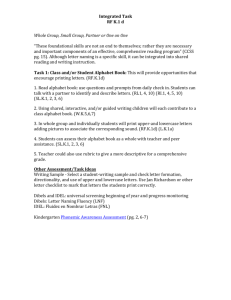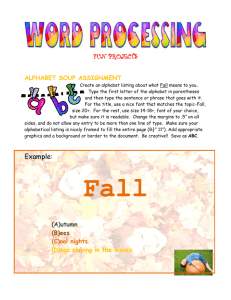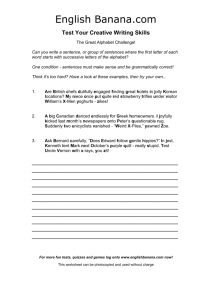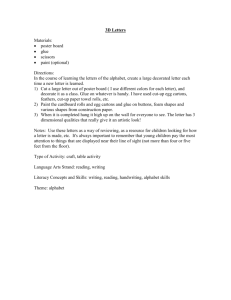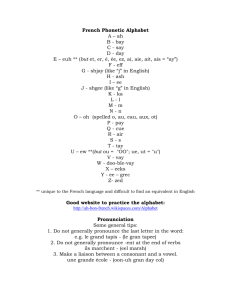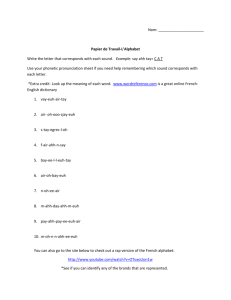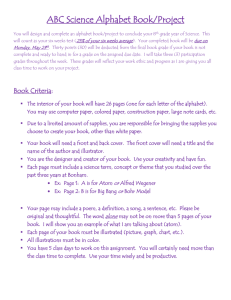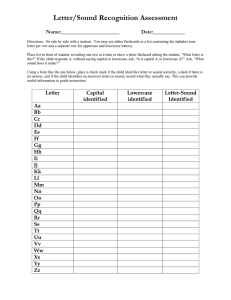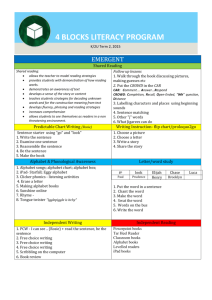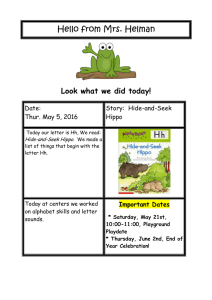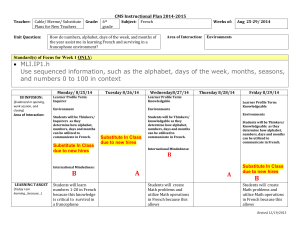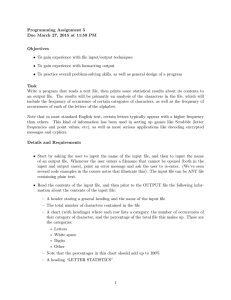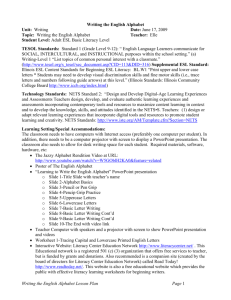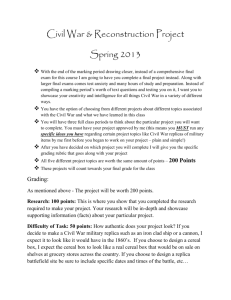Alphabet Activities - Riverview Early Learning Center
advertisement
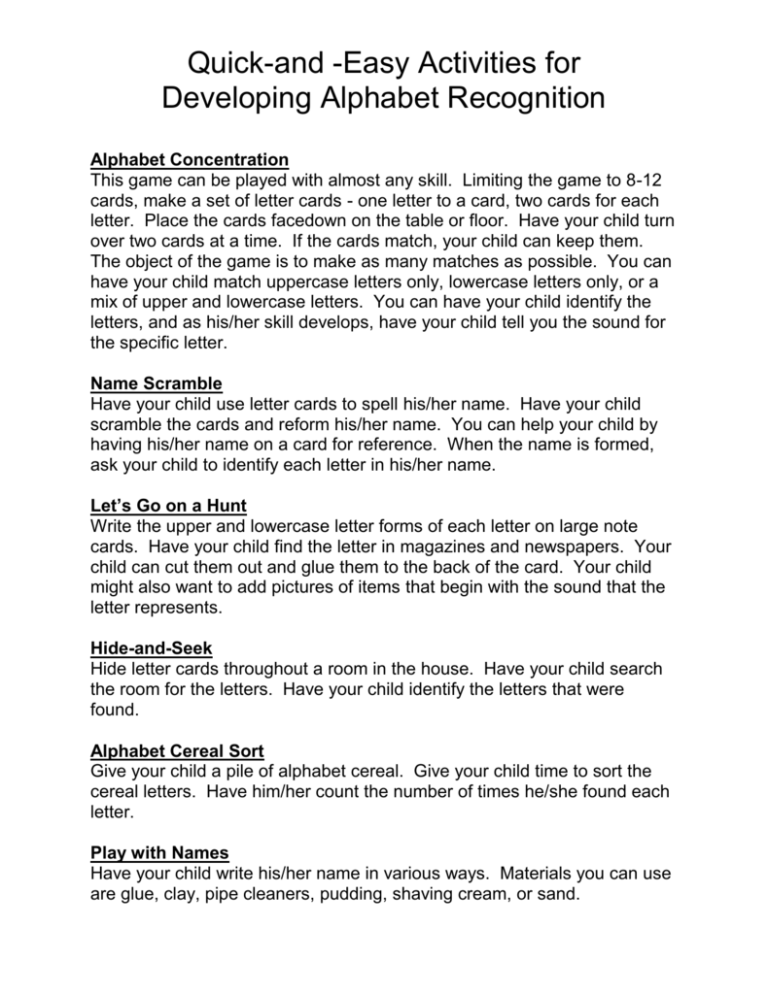
Quick-and -Easy Activities for Developing Alphabet Recognition Alphabet Concentration This game can be played with almost any skill. Limiting the game to 8-12 cards, make a set of letter cards - one letter to a card, two cards for each letter. Place the cards facedown on the table or floor. Have your child turn over two cards at a time. If the cards match, your child can keep them. The object of the game is to make as many matches as possible. You can have your child match uppercase letters only, lowercase letters only, or a mix of upper and lowercase letters. You can have your child identify the letters, and as his/her skill develops, have your child tell you the sound for the specific letter. Name Scramble Have your child use letter cards to spell his/her name. Have your child scramble the cards and reform his/her name. You can help your child by having his/her name on a card for reference. When the name is formed, ask your child to identify each letter in his/her name. Let’s Go on a Hunt Write the upper and lowercase letter forms of each letter on large note cards. Have your child find the letter in magazines and newspapers. Your child can cut them out and glue them to the back of the card. Your child might also want to add pictures of items that begin with the sound that the letter represents. Hide-and-Seek Hide letter cards throughout a room in the house. Have your child search the room for the letters. Have your child identify the letters that were found. Alphabet Cereal Sort Give your child a pile of alphabet cereal. Give your child time to sort the cereal letters. Have him/her count the number of times he/she found each letter. Play with Names Have your child write his/her name in various ways. Materials you can use are glue, clay, pipe cleaners, pudding, shaving cream, or sand. Letters in My Name Activities Recognizing, Naming and Sequencing Letters in Name In all the research about learning to read, one of the key indicators for prereaders is whether a child knows the alphabet...not just reciting the sequence, but recognizing and naming those letters out of order. Start this game by just using the letters in your child’s name. Mix up the individual letter cards and have your child put the letters back in order. Encourage your child to name the letters as he/she spells the name correctly. Use phrases like, “That’s right, the ‘u’ is next.” “Yes, the ‘m’ is next. You have two ‘m’s’ in your name.” Be sure you give your child a turn to mix up the letters and have you rebuild it. This makes the game more playful and provides a correct model. Your child is hearing you name the letters correctly. Repeat this until your child can name the letters successfully. **Once your child has mastered the letters in his/her name, extend the game to include the letters in his/her last name....or use other names of people in your family. What Letter is Missing? By now your child may be able to arrange a sequence of letters to make his/her name. Using the letter cards, have your child show you the letters in his/her name. Be sure to have your child name the letters as he/she gets them in order. This game is called, “What letter is missing?” The child closes his/her eyes, and a partner takes one letter out of the sequence. Ask your child to name the letter that was taken. It might help to have a copy of your child’s name to refer to. Be sure to take turns so the child gets a turn to be the person who takes the letter. The whole point here is to reinforce the names of the letters in and out of sequence. Letters in My Name Activities Writing on My Back This game involves writing letters on each other’s back. It is very engaging to children, and has a playful quality that makes kids want to play more. The physical action of making a letter on your child’s back adds a kinesthetic (tactile) element, and can reinforce the way letters are made. Have your child lay out his/her name letters in order. Now tell your child your are going to write one of those letters on his/her back. Use words to describe what you are doing to make that letter. For example, “I’m going straight down. Then I’m crossing it. In your name, which letter is that?” (t) Your child may point to the letter, but not yet know it’s name. Just say, “Yes, it was the ‘t’. Now you make a ‘t’ on my back.” For more of a challenge, use more letters! Describing the Letters in My Name The point of this game is to get your child to really look at individual letters and their shapes. It helps your child develop descriptive oral language as well. Strong oral language is another indicator of early reading success. Have your child choose four letters from his/her name and lay them in a row. Now you describe how one of those letters looks. Examples: “It has a dot on the top.” (i) “This one has a hump.” (n) “This letter is round like a circle” (o) See if your child can tell which letter you are describing. Give your child a turn to describe how the letters look. You may find that your child will repeat your clues. That’s OK. Once again, you have modeled for the child and that’s what good teachers are always trying to do. For more of a challenge, use more letters!
